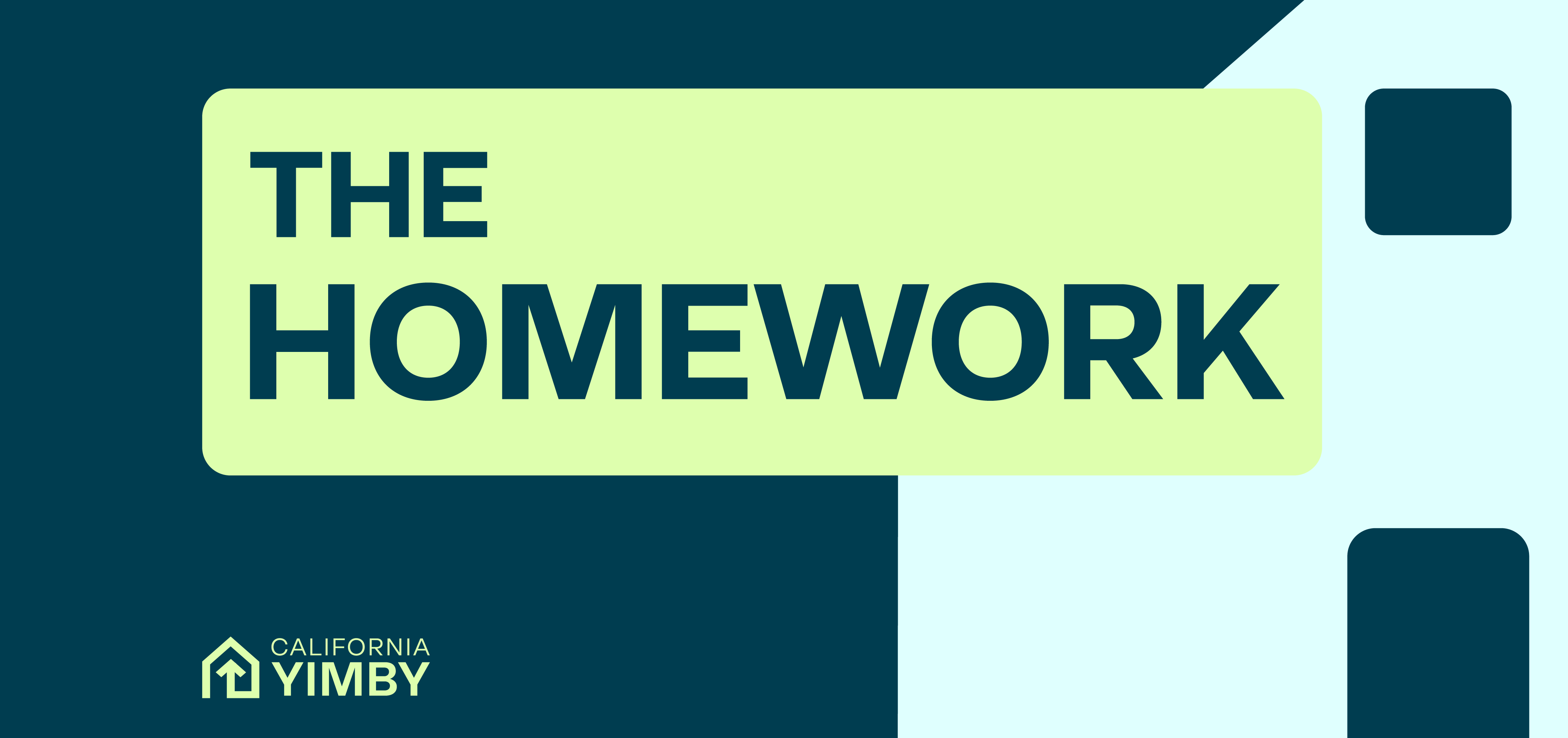The HomeWork: June 18, 2020

Welcome to the June 18, 2020 Main Edition of The HomeWork, the official newsletter of California YIMBY — legislative updates, news clips, housing research and analysis, and the latest writings from the California YIMBY team.
News from Sacramento
The Legislature passed a budget on Monday, but budget negotiations are likely to continue, in some form, through at least the end of August. The proposals from the Legislature and the Governor still have differences that need to be worked out, and key policies tied to the Budget Act have not been agreed to. The Budget Act as proposed now retains a $500 million increase in the Low Income Housing Tax Credit, among other housing priorities.
With the untimely death of AB 3155 (Rivas) in the Assembly Appropriations committee, housing production legislation in the Legislature is likely to yield significantly fewer homes and make less of an impact on the housing crisis. AB 3155 would have streamlined the production of small, more naturally affordable homes, but its failure means Californians will need more than what’s on offer to just get back to where production was before COVID-19.
California YIMBY is continuing our focus on SB 902, AB 1851, AB 3182, SCA 1, and on helping the remaining Senate housing production bills where we can. Stay tuned for more information on the group of Assembly bills we will be focusing on in addition to the Senate housing production bills, such as SB 1120 and SB 1385.
To learn how to support our efforts, contact Louis Mirante at louis@cayimby.org.
Housing Research and Analysis
COVID-19 and Overcrowding: Communities of Color Hardest Hit
A new study from the Joint Center for Housing Studies at Harvard University has added fuel to concerns about the risk of pandemic spread in overcrowded housing. Its findings: At least 5.4 million households are at high risk of spreading COVID-19, because residents work in close contact with the public, and do not have enough space to be isolated at home.
Key takeaways:
- A third of all households work in “high-proximity” jobs, but a disproportionate share of Black and Hispanic households have high-proximity workers.
- Younger households are more likely to include high-proximity workers, but that still puts multigenerational households at risk.
- A disproportionate share of Black and Hispanic workers risk spreading COVID-19 to high-risk household members, due to working in close quarters and living in overcrowded housing.
Yes In God’s Back Yard
A new study by UC Berkeley’s Terner Center finds that 38,800 acres of developable land held by faith-based organizations in California could (and very likely would) be developed for affordable housing, if local land-use regulations would permit them. Two bills currently moving through the state legislature, Assembly Bill 1851 and Senate Bill 899, would help clarify the regulations that currently make it difficult to build housing on property held by religious institutions.
Key takeaways:
- The amount of developable land held by religious institutions is large — at least as much as the entire city of Stockton —and often in ideal locations for affordable housing.
- Current barriers to housing development on this land include zoning, access to finance, and existing infrastructure.
- Faith groups need streamlined land-use regulations and support from housing experts to develop their land.
Houser Headlines

- The Unsurprising Reason More Black Americans Are Becoming Homeless
- Making Room: Black Neighbors Matter
- Redlining: How racist housing practices led to Berkeley’s segregated neighborhoods
- City planners need to talk about race. The lives of our residents depend on it.
- Environmentalists Can Help Address Racism Through Housing Policy
- The Racial Injustice of American Highways
- Streets Need to Be Safe for Black Lives, Too
YIMBY Social – Top Posts
Share the good word
We welcome your ideas and feedback — send story tips and ideas to Homework@cayimby.org.
Did someone forward this email to you? Sign up to get it here.


